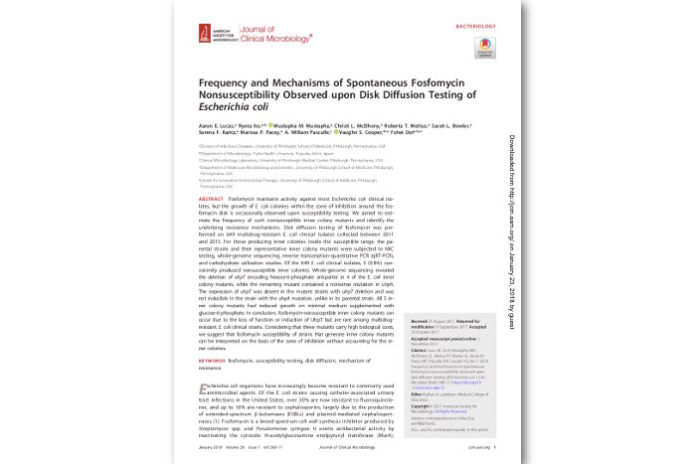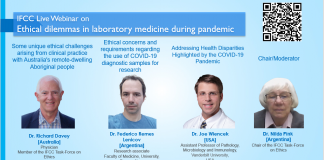Fosfomycin maintains activity against most Escherichia coli clinical isolates, but the growth of E. coli colonies within the zone of inhibition around the fosfomycin disk is occasionally observed upon susceptibility testing. We aimed to estimate the frequency of such nonsusceptible inner colony mutants and identify the underlying resistance mechanisms. Disk diffusion testing of fosfomycin was performed on 649 multidrug-resistant E. coli clinical isolates collected between 2011 and 2015. For those producing inner colonies inside the susceptible range, the parental strains and their representative inner colony mutants were subjected to MIC testing, whole-genome sequencing, reverse transcription-quantitative PCR (qRT-PCR), and carbohydrate utilization studies. Of the 649 E. coli clinical isolates, 5 (0.8%) consistently produced nonsusceptible inner colonies. Whole-genome sequencing revealed the deletion of uhpT encoding hexose-6-phosphate antiporter in 4 of the E. coli inner colony mutants, while the remaining mutant contained a nonsense mutation in uhpA.
The expression of uhpT was absent in the mutant strains with uhpT deletion and was not inducible in the strain with the uhpA mutation, unlike in its parental strain. All 5 inner colony mutants had reduced growth on minimal medium supplemented with glucose-6-phosphate. In conclusion, fosfomycin-nonsusceptible inner colony mutants can occur due to the loss of function or induction of UhpT but are rare among multidrugresistant E. coli clinical strains. Considering that these mutants carry high biological costs, we suggest that fosfomycin susceptibility of strains that generate inner colony mutants can be interpreted on the basis of the zone of inhibition without accounting for the inner colonies.
Authors: Aaron E. Lucas,a Ryota Ito,a,b Mustapha M. Mustapha,a Christi L. McElheny,a Roberta T. Mettus,a Sarah L. Bowler,a Serena F. Kantz,a Marissa P. Pacey,a A. William Pasculle,c Vaughn S. Cooper,d,e Yohei Doia,b,e
- Division of Infectious Diseases, University of Pittsburgh School of Medicine, Pittsburgh, Pennsylvania, USA
- Department of Microbiology, Fujita Health University, Toyoake, Aichi, Japan
- Clinical Microbiology Laboratory, University of Pittsburgh Medical Center, Pittsburgh, Pennsylvania, USA
- Department of Molecular Microbiology and Genetics, University of Pittsburgh School of Medicine, Pittsburgh, Pennsylvania, USA
- Center for Innovative Antimicrobial Therapy, University of Pittsburgh School of Medicine, Pittsburgh, Pennsylvania, USA











